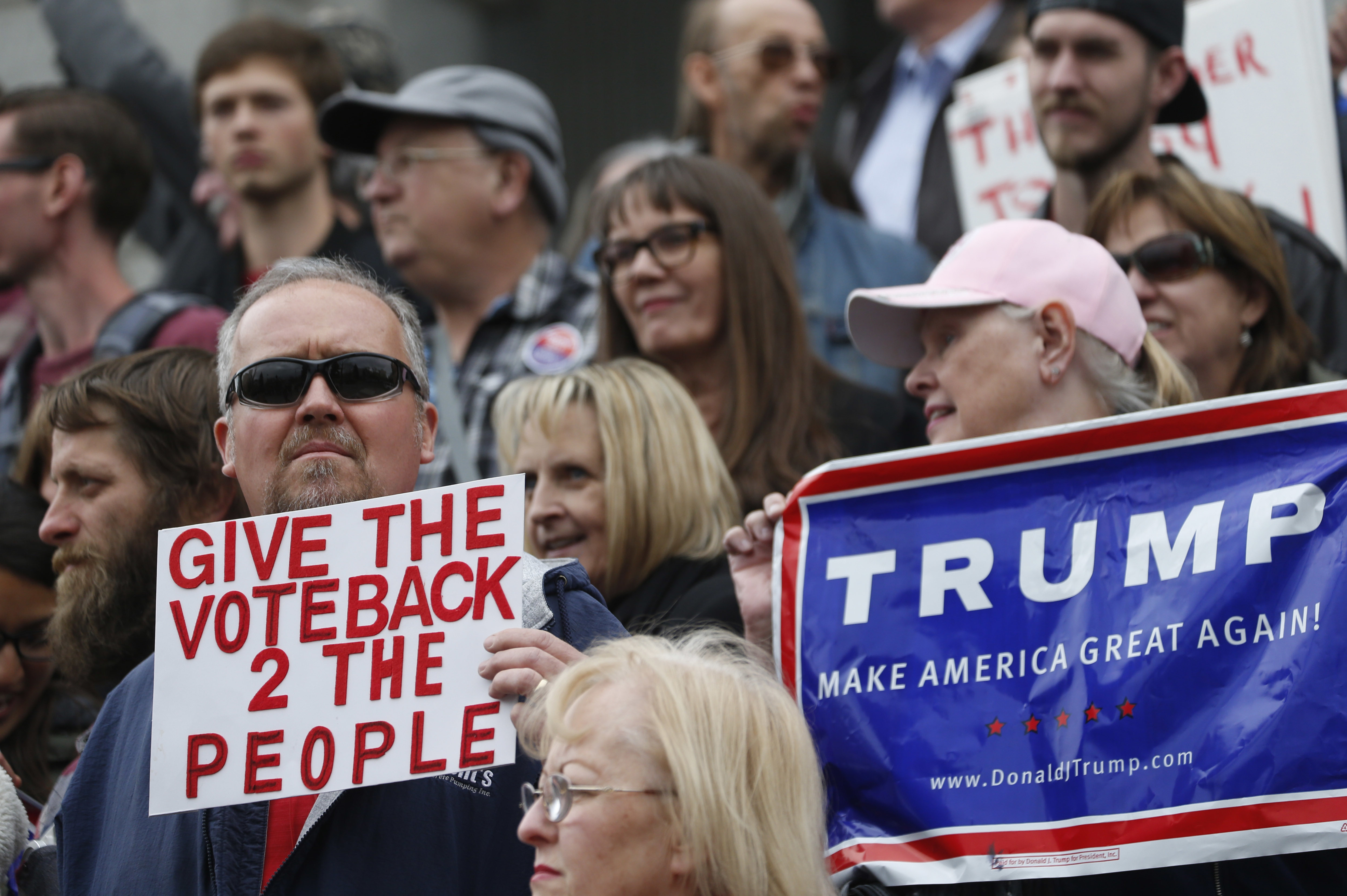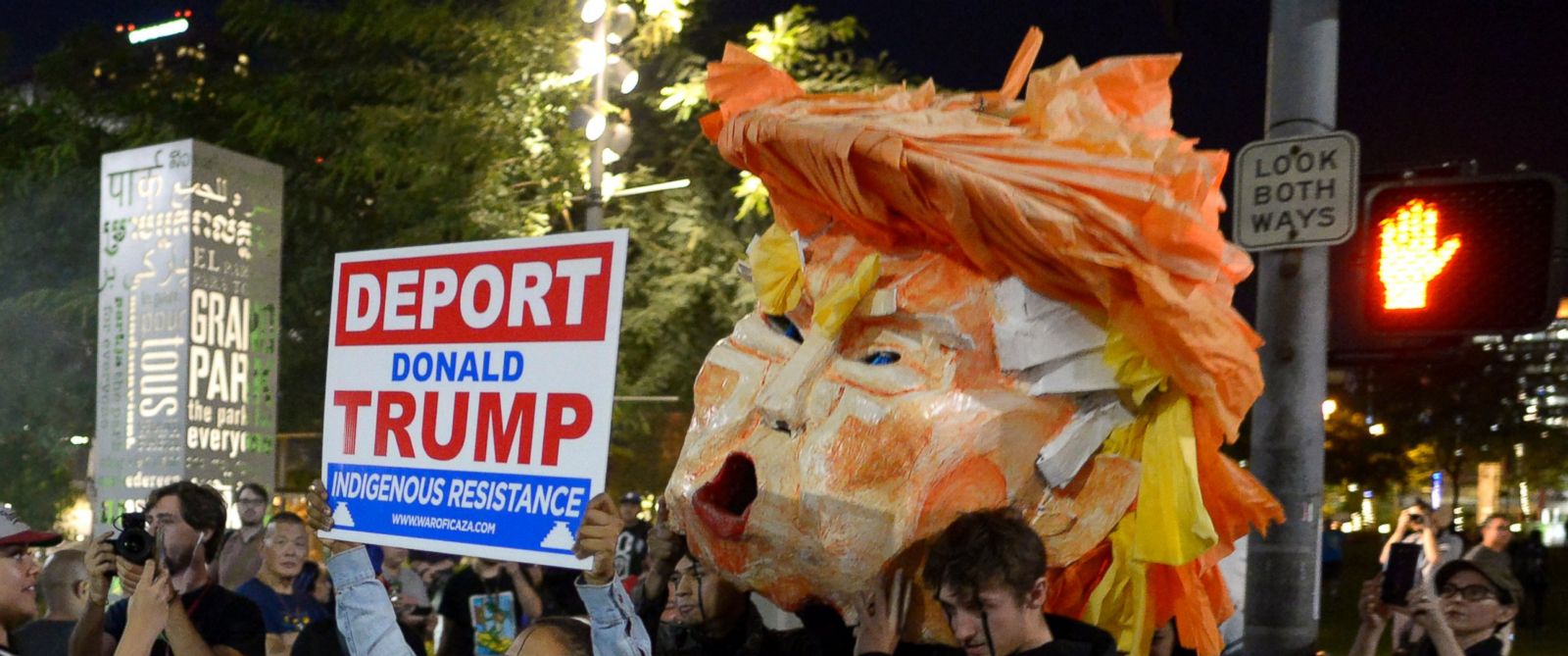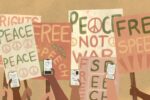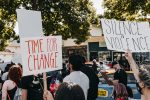The Art of Peaceful Protesting in Times of Change
Protesting the recently established President-elect may not change the outcome, but it’s still important to exercise your First Amendment rights.
By Crissonna Tennison, UCLA
On Thursday, I sat in the college library computer lab finishing up a story about the peaceful anti-Trump protest that had occurred on campus that morning.
Hundreds of students, faculty and community members had gathered to support and affirm marginalized groups, tell stories and declare that the messages of hate the new President-elect spewed during the election campaign are unacceptable and don’t reflect the values of the America that they cherish.
As I was finishing up my story, I overheard a fellow student wonder aloud to her friend why people were protesting. After all, it’s not like Trump would suddenly back down from the presidency. Protesting wouldn’t change the results, or even the likelihood of delegates voting in opposition to their state on December 19.
The student is correct in saying that there is little that can be done now to change the fact that Donald J. Trump will be inaugurated as the President of the United States on January 20, 2017. But protesting is not a waste of time. Nonviolent demonstrations are an exercise of the freedom of speech and assembly that the First Amendment promises (the same freedom of speech that allowed the President-elect to deliver hateful vitriol throughout his campaign). Protest allows participants to express solidarity and agency, provides an opportunity to make connections that will be crucial to organizing and preparing for the next election and serves as a tool for reinforcing the values of inclusiveness and diversity that are supposed to define this country. Now, more than ever, is the time to embrace and use present freedoms in the face of uncertainty about how exactly a Trump presidency will affect our future.
Solidarity
On election night, people with marginalized identities found out that roughly half of the United States population thinks it is okay to have a president who has uttered blatantly racist ideology and bragged about sexually mistreating women. For women, people of color, practitioners of Islam and disabled people, a country that never felt completely safe is now downright terrifying. Undocumented people have to deal with the fear of imminent deportation. LGBTQ people may see hard won marriage equality rights compromised and trans bathroom equality endangered. Expressing solidarity, friendship and support through protest is of utmost importance for communities who received the loud, clear message Tuesday night that much of the country does not welcome their presence or care about their pain.

Taking Up Space
For those who have one or more intersecting marginalized identities, learning how to take up space is one of life’s defining struggles. It takes relentless effort to affirm one’s own worth in the face of community hatred and indifference. It is difficult to know how and when to express that worth in a way that celebrates the individual and the culture they represent. The biggest challenge is determining when it is safe to express oneself and when it is not. When thousands of bodies come together and occupy a space, it is a visual manifestation of that struggle. Actions such as stopping traffic may appear to be destructive because they disrupt the daily lives of citizens that do not feel they are directly involved in oppression. But acknowledging the humanity of others is the most important struggle for every human and country, and it is rarely convenient. Nonviolent resistance is designed to create discomfort because it forces people to reckon with the existence and humanity of others.
Affirming True Values
There is a difference between accepting the reality of a new president and accepting the values that his rhetoric reflects. Gathering in protest makes clear to the president and the rest of the country that any statements and actions that inflict physical and emotional pain on marginalized identities are not acceptable. It announces that such actions do not reflect of the values of the United States or the desires of the majority of the electorate. It serves as a vehicle for calling out behavior that individuals may be powerless to control. It shows the rest of the world that the actions of a hateful leader are not supported by his people. It demonstrates a refusal to be complacent. Silence is complicity. Resignation is a privilege for those who do not stand to lose a lot under a caustic regime.

Planning and Community Building
Protesting is an excellent way to bond with new people over serious ideals and build the strong networks that are crucial to creating strong movements. The election served as a wake-up call for those who did not take the President-elect seriously as a candidate—or rather, those who did not believe that so many United States citizens could support an outrageously abrasive man for the highest office in the land. Now is a time for moving forward, for planning a different approach to the next election, and that begins today. Most who are unhappy with the election results are at a loss for what the next step should be, if there is one. There is, even if it is in fact many little steps: supporting the ACLU, volunteering for reproductive health centers such as Planned Parenthood, helping friends and family logistically prepare for severe cuts in medical access. Involvement in political activities and communities can help people stay informed about available resources while offering support to individuals.
To those who say that Donald Trump won “fair and square,” and that people need to “get over it”: It is “fair and square” for citizens to exercise their right to nonviolent protest, and marginalized people and their allies will not “get over” being treated as irrelevant.
It is impossible to know what exactly a Trump presidency will look like. But for thousands of Americans, the “wait and see” attitude is not a satisfactory reaction to fear and uncertainty. Unfortunately, Americans have to work with current realities to make the world a better place. Peaceful protest is the shaky first step in achieving that lofty and overwhelming goal.

















